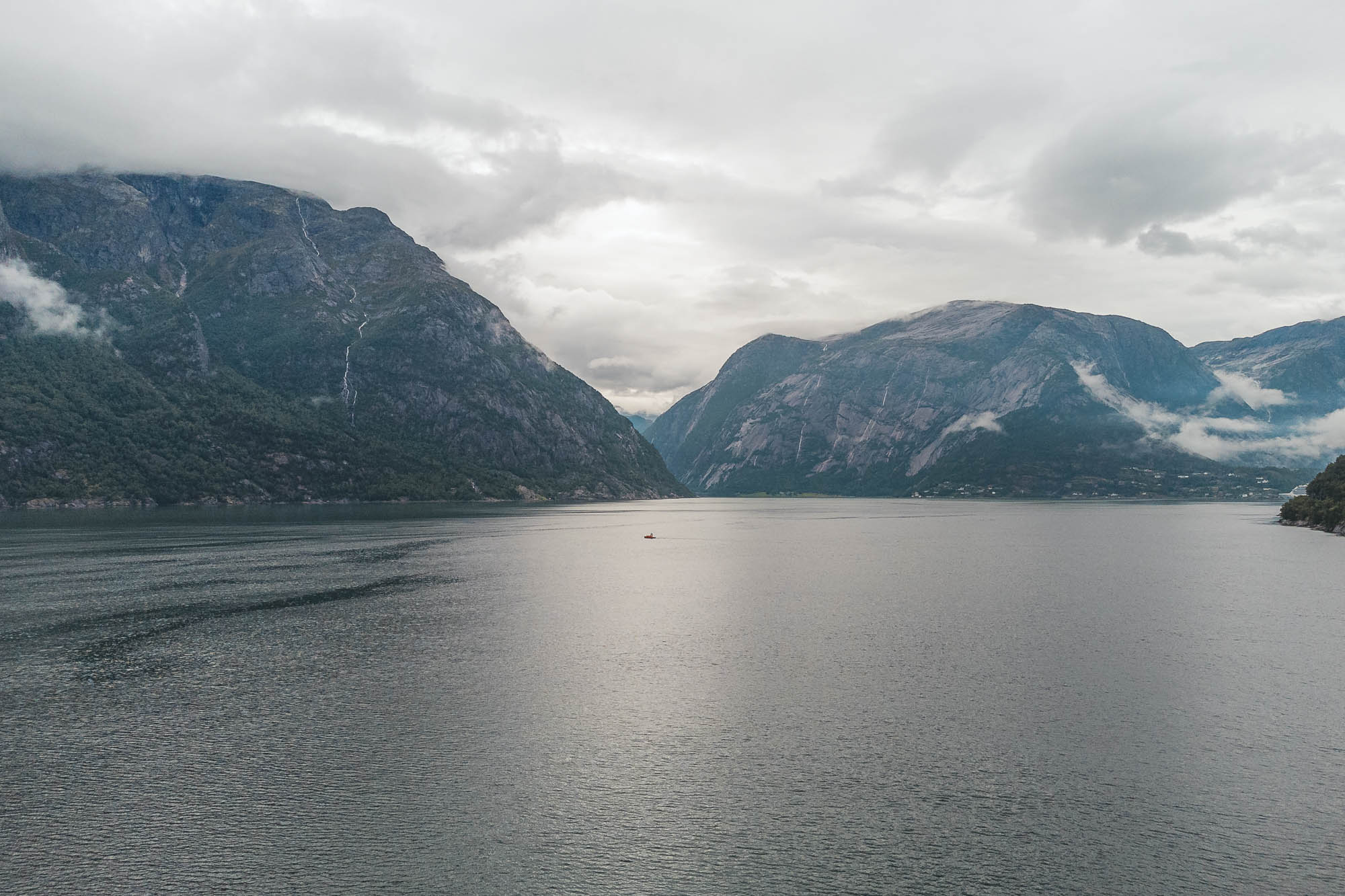Unmanned vehicles to meet growing need for research data

The autonomous vehicle Brage, which has been lent to us by Kongsberg Discovery, collecting data in Hardangerfjorden. The research vessel Kristine Bonnevie can be seen in the background.
Photo: Christine Fagerbakke / IMRPublished: 23.10.2023 Updated: 07.11.2023
Our research vessels collect echosounder data that is used to monitor fish populations, but from now on a lot of this data collection will be done by small unmanned vehicles such as the “Sounder” USV and kayak drones.
They can also collect data right up to the sea surface, where traditional research vessels have had a blind spot, because their echosounders are fitted so deep that they cannot see the very top water layers. In addition, smaller, unmanned vehicles can go nearer the shore in fjords thanks to their lower draught and tighter turning radius.
“With manned and unmanned research vessels working more seamlessly together, they will have a role in the future of marine research. No one knows exactly where the road ahead lies, but we are helping to shape developments” says Research Director Espen Johnsen.
Kajakk vs. the «Sounder»
During the sprat survey in Hardangerfjorden, researchers tested the various echosounders and vessels against each other. The Institute of Marine Research’s in-house kayak drone has been used in the past, but this was the first time that a Sounder drone supplied by Kongsberg was used by the IMR to monitor fish populations.
Together with the research vessel Kristine Bonnevie, they followed exactly the same course while collecting data.
Johnsen explains that ships, kayak drones and the Sounder are good at different things, so there is no “one size fits all” solution. One type of vessel does not exclude the others.
The Sounder used here, Brage, was lent to us by Kongsberg Discovery to carry out a pilot survey. The IMR’s own unmanned vehicles will be delivered later in the autumn of 2023. These will be equipped with gondolas, which both create space for the same acoustic package as on a research vessel and improve the quality of the acoustics in heavy seas and bad weather. They will have exactly the same set-up as a research vessel.
“The kayak drone, which has an electric motor, is quieter than the Sounder and can ‘sneak up’ a bit closer, whereas the Sounder can cover bigger areas more quickly”, says Johnsen.
The Sounder can also operate more independently, including out at sea.
The Research Director explains that in order to monitor fish populations, we nevertheless still need biological samples obtained by trawling to supplement the echosounder data. That is because there is a need to know more about the composition of species and age structure than the drone can tell us.
Carefully selected species and location
The choice of the sprat survey as the pilot for testing the research drones was deliberate: researchers have suspected that they are unable to adequately monitor the sprat population.
Sprats come to the surface when it is dark, and often swim right at the surface during the summer months to feed on plankton. When they are so high up the water column, Kristine Bonnevie cannot pick them up with its echosounder, which is fitted under the keel, several metres below the waterline.
In the longer term, the researchers will also use the unmanned vehicles for sand lance and spring-spawning herring along the Norwegian coast.
“Right now we are finding that the data from the drones and the research vessel complement one another. Having a better understanding of what there is at the very top of the water column will also help us to provide better advice on this species”, says Johnsen.
However, in the long run, the goal is for greater use of unmanned vehicles to substitute a lot of the surveying that is currently done by big ships.

CRIMAC: converting echosounder data into fish numbers in real time
Unmanned vehicles can collect high-resolution data from broadband echosounders and ADCPs 24 hours a day. This is far more data than they can transmit via satellite.
What if the drones could just “phone home” and tell us exactly how many herrings, sand lances and sprats they can see?
Marine scientists and their industrial partners are working to solve this issue as part of the big CRIMAC project.
“The challenge is that we cannot interpret the data in real time. So we must find good ways of converting the information into something we can use in the meantime. A lot of our work is about compressing information, so that the people on land can take the right decisions”, says Nils Olav Handegard, the Project Manager of CRIMAC.
Using machine learning and artificial intelligence should make it possible to interpret the large data sets automatically. The long-term goal is to make fisheries more sustainable and to improve fisheries management.






